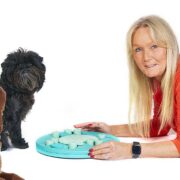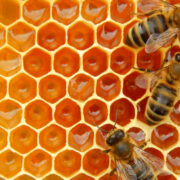Ahhh… what’s that amazing smell? It’s puppy breath. If you’ve ever been around a young puppy, then you know what the sweet smell of puppy breath is and how intoxicating it can be.
What is going on in a dog’s mouth to give him puppy breath? And why is it only a new puppy thing? How come when dogs get older, the smell of puppy breath goes away?
Read on for the answers to all your sweet puppy breath questions.
So, What Exactly Is Puppy Breath?
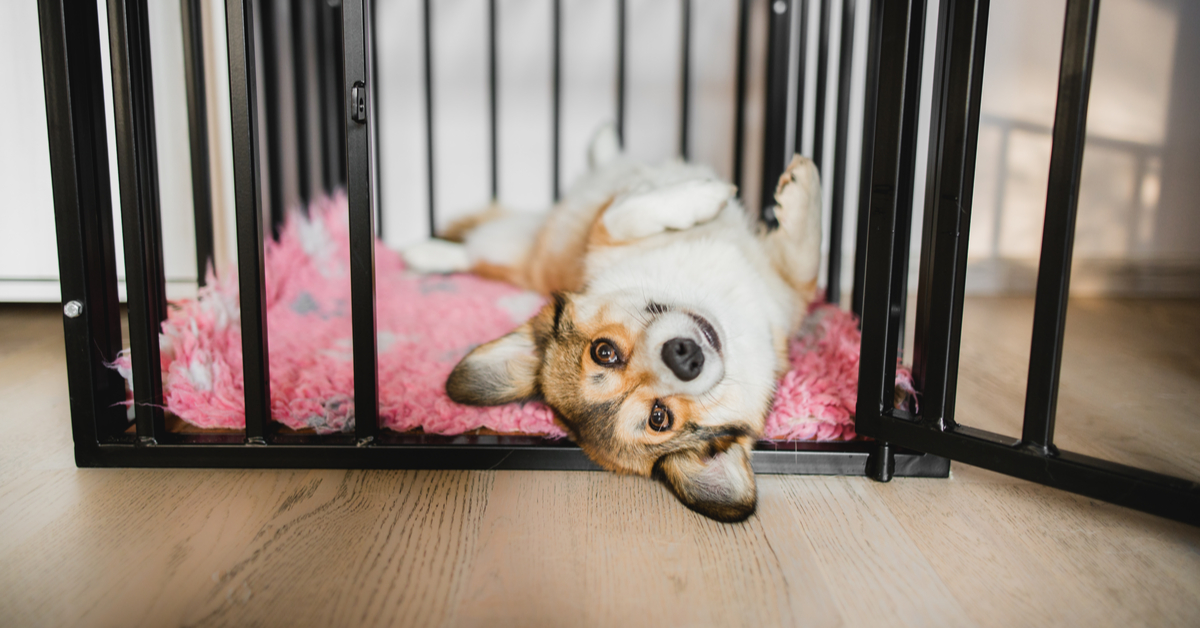
Puppies have sweet-smelling breath for a variety of reasons. Essentially, it occurs because of a combination of the puppy having clean teeth, drinking his mother’s milk, and the kinds of bacteria that are present in a new puppy’s mouth.
Since a new puppy is drinking milk and hasn’t started eating those stinky foods that adult dogs eat, and they don’t have odor-causing bacteria or plaque in their mouths, his breath is automatically going to smell better. Some veterinarians think that gas leaking into a puppy’s stomach from his developing esophagus also contributes to puppy breath.
Additionally, before a new puppy begins to teethe, his mouth is healthy and much cleaner. As a result, he won’t be suffering from gum disease, periodontal disease, or oral hygiene issues, which some dogs have. But when they do teethe, their gums start to bleed, and this pooled blood may lead to bad breath.
Remember that not every young puppy is going to have puppy breath if he has other problems going on. If he has an impacted tooth, becomes ill, or eats poop – which is not as uncommon as you’d think – then that is going to affect the smell of puppy breath.
How Long Puppy Breath Smells Last
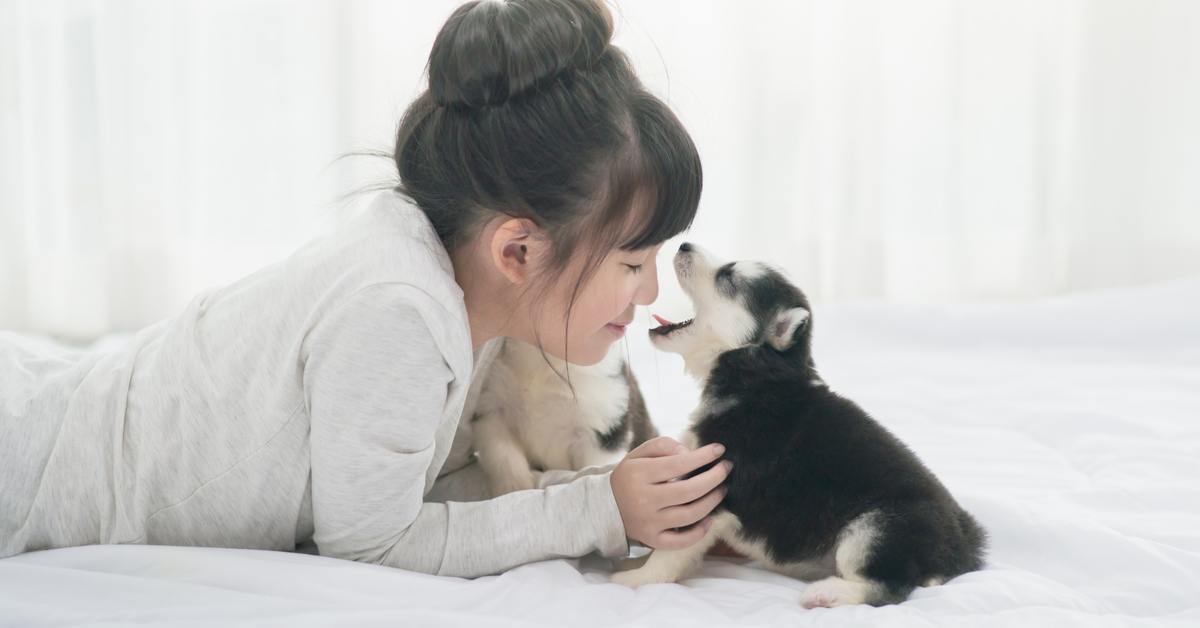
Sweet puppy breath smells will typically only last for the first few months of a new puppy’s life. However, your dog’s breath doesn’t have to go from smelling incredible to smelling terrible. With the right preventative measures, you can ensure that your dog has good-smelling breath as long as possible.
How? The first step is to brush your dog’s teeth a minimum of three times per week, but ideally every day, with a soft toothbrush and dog toothpaste. You could also put additives in your pup’s water that will clean his teeth and gums. By staying on top of his oral hygiene, you are going to keep his gums and teeth healthy well into his adult years.
You should take your dog to the veterinarian for a check-up a few times per year. Ask your veterinarian how often they believe your dog should get a deep cleaning of his teeth.
It is estimated that over 2/3 of dogs older than three years of age have periodontal disease, an infection or inflammation of the tissues surrounding dogs’ teeth. But if you keep up with a teeth-cleaning routine, you can hopefully avoid periodontal disease and other diseases that affect older dogs.
Chew Toys for Dental Health
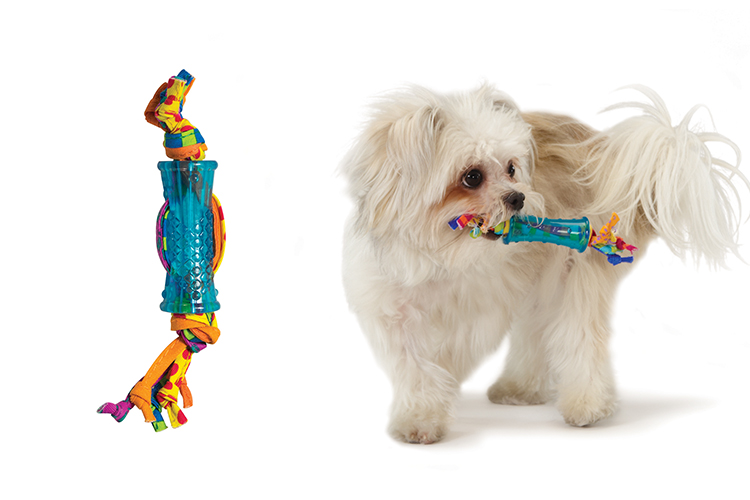
Pet owners need to invest in puppy chew toys to keep their puppy’s teeth healthy and strong. Your young puppy will love dental chew toys like the Orka Mini Dental Chews. They come in a three-pack and are designed for puppies and small dogs. These toys feature a rubber ridge design, which helps massage gums and clean your dog’s teeth, while the cotton rope helps remove soft tartar buildup as your dog chews on them.
As your dog gets older, he may enjoy Orka Dental Links, which are for tough chewers that clean your dog’s teeth and gums while ensuring they stay active.
Making Teeth Cleaning a Breeze
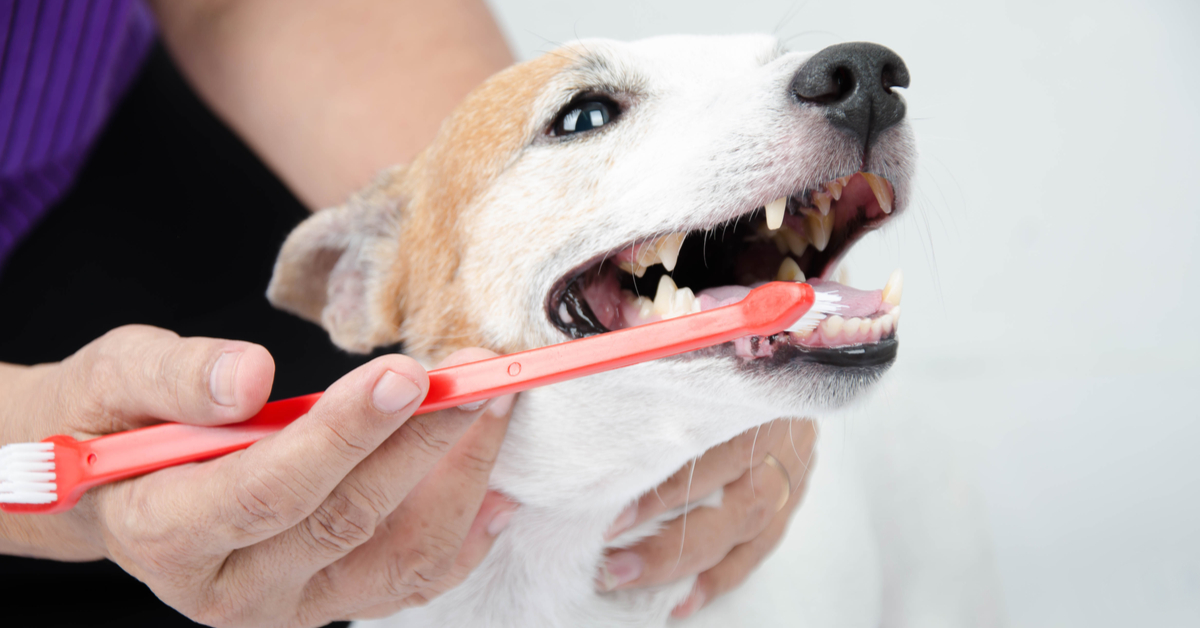
Let’s say you want to get started with brushing your dog’s teeth, but you aren’t sure how to go about it. After all, you want to ensure that your dog is comfortable and that he isn’t going to bite you when you attempt to brush his chompers.
When you’re attempting to clean your dog’s teeth, first pick a quiet place where he isn’t going to become anxious. If there is another dog around or your kids are running about, he could be harder to handle. So take him to the bathroom or somewhere else where he feels relaxed. Perhaps a cozy room or on his fluffy calming dog bed.
If your dog fits in your lap, hold him securely and put his face away from yours. If you have a larger dog, then sit on a chair and make him sit next to you.
Take a small cloth and rub it on the outer surfaces of his teeth in a gentle back-and-forth motion. Stay on the outer surfaces so that your dog doesn’t accidentally bite you. Then, let him taste a little bit of the doggy toothpaste so he gets used to it. Never use human toothpaste, as it can be detrimental to your pup’s health.
Apply a small amount of the dog toothpaste to the cloth and rub it over your dog’s teeth. Once he gets accustomed to that, take out the brush. The doggy toothbrush should be angled and have multiple heads so you can brush the outside, inside, and top surfaces of his teeth.
You can use a regular toothbrush you hold in your hand or get a finger toothbrush that will fit over the top of your finger. Whichever brush you use, you might also want to put on gloves since dog’s mouths contain a lot of bacteria or stuck puppy food.
When Does a Young Puppy Begin Teething?
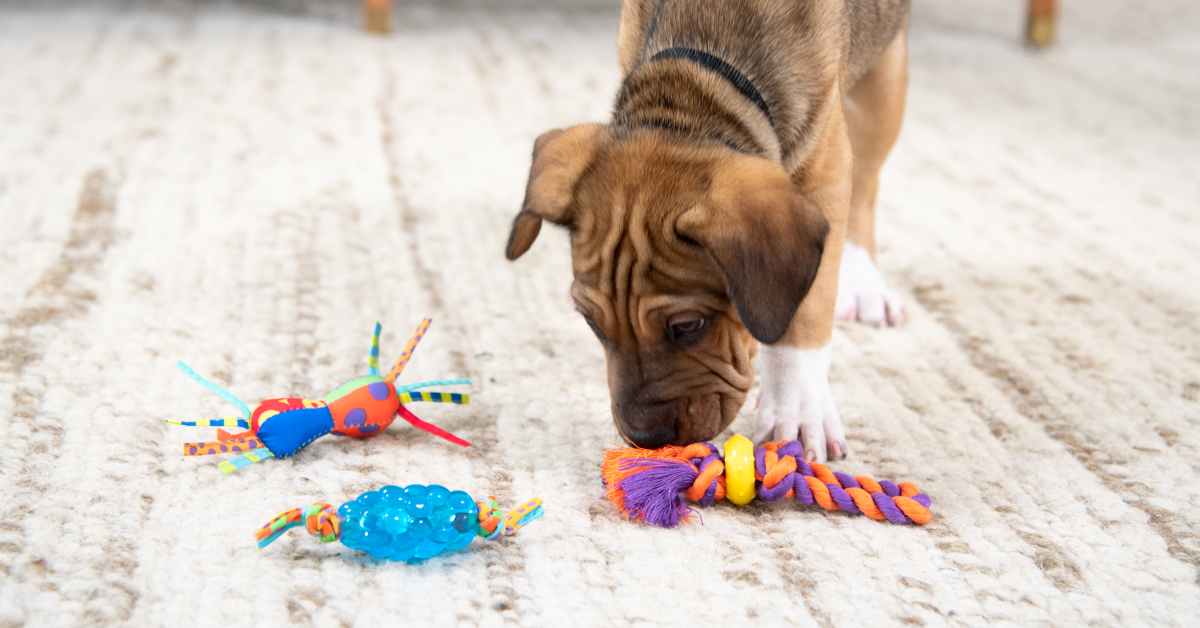
Puppy teething usually happens within the first two or three weeks of a new puppy’s life, and by six weeks of age, he should have his full set of 28 baby teeth. When he’s around three or four months old, his razor-sharp and tiny baby teeth will fall out, and around six months of age, he should have his full set of 42 adult teeth.
Keeping Your Pup Healthy
Though puppy breath doesn’t last forever, it doesn’t mean your dog has to have bad-smelling breath as he gets older. Dog owners: By keeping up with a teeth-cleaning routine and ensuring your dog goes to the veterinarian a few times per year for a check-up, you can prevent tooth and gum disease and make that nice-smelling breath last even longer.
You can find chew toys for teething puppies on our website.
